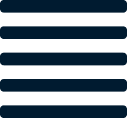You may be wondering what exactly a planner does with their time, besides the obvious planning. Put simply, your main responsibility as a planner is to order the right amount of inventory, at the right time. But in order to do this, you must put in place and manage quarterly, monthly, weekly, and daily processes consisting of pre-season, in-season, and post-season planning and analysis. In other words, no two days are the same!
1. Check Your Emails
Pour yourself a large cup of coffee and get ready for the day ahead! Because your role as a planner is integral to the connectedness of the organization, it’s important to stay up to date on all relevant information from the teams you bridge. This means staying on top of what your Finance, Supply Chain, and Marketing teams are requesting or sharing with you.
2. Know Your Sales
While you’re probably naturally curious and want to know how you’re performing, having a pulse on performance will also help you with the day’s decisions and ensure others you are well informed. Trust is a fundamental component of any Planner’s relationship with their team and knowing what your sales are is a key part of building it. Stay on top of performance highlights, wins and losses, and you’ll be sure to leave a good impression!
3. Manage Your Inventory
A big part of planning is having a good handle on where your inventory lives. This means staying on top of deliveries and any shifts in receipts, stock levels, and any other inventory records that may impact sales and performance. This time may be spent running and analyzing reports, asking and answering your own questions, and most importantly, taking note of anything that will impact product planning.
4. Forecast
Alas, you have the most up to date information to influence your planning strategy and projected sales. Now’s the time to put these learnings into effect. This is the part of your day spent in any systems and/or excel models used to forecast demand and inventory needs. While this may be among the most time consuming of the day’s activities, it is undeniably the most important.
5. Submit Your Handoffs
Similar to how you start the day making sure you’re up to date on everything, you typically end the day ensuring anything that may impact others is shared in the appropriate manner. Once you’ve cleaned everything off your plate, spend some time planning the rest of your week and making sure all monthly and quarterly to-do’s are being taken care of as well.
Enjoy the Ride
Being a planner truly is an exciting role. You get to work with every part of the business, buy products, and watch mathematically backed guesses unfold. Not only do you forecast inventory needs and performance, you’ll be on top of both short term and long term business planning as well. A great practice to make the ride as smooth as possible is ensuring information is up to date and accessible to others, asking questions, and staying curious!
At this point, you may be wondering, “Are planners superheroes, too? How is all of this done in one day?” The short answer is, it won’t always be. That’s where Fuse comes in. Our goal is to help simplify the inventory planning process and make a Planner’s role easier. We take out the grunt work from these tasks so that you can focus on the big picture. Less day-to-day, more accomplishment-to-accomplishment.
.png)

.png)









.png)



%20hover.png)
.png)
hover.png)







Let us know what you think about this post
Put your comment below.